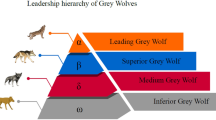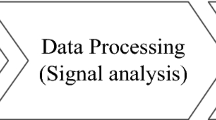Abstract
In modern automotive engines, air–fuel ratio (AFR) strongly affects exhaust emissions, power, and brake-specific consumption. AFR control is therefore essential to engine performance. Most existing engine built-in AFR controllers, however, are lacking adaptive capability and cannot guarantee long-term control performance. Other popular AFR control approaches, like adaptive PID control or sliding mode control, are sensitive to noise or needs prior expert knowledge (such as the engine model of AFR). To address these issues, an initial-training-free online sequential extreme learning machine (ITF-OSELM) is proposed for the design of AFR controller, and hence a new adaptive AFR controller is developed. The core idea is to use ITF-OSELM for identifying the AFR dynamics in an online sequential manner based on the real-time engine data, and then use the ITF-OSELM model to calculate the necessary control signal, so that the AFR can be regulated. The contribution of the proposed approach is the integration of the initial-training-free online system identification algorithm in the controller design. Moreover, to guarantee the stability of the closed-loop control system, a stability analysis is also conducted. To verify the feasibility and evaluate the performance of the proposed AFR control approach, simulations on virtual engine and experiments on real engine have been carried out. Both results show that the proposed approach is effective for AFR regulation.




















Similar content being viewed by others
Abbreviations
- \({{\text{a}}_i}\) :
-
Input weight of the ith hidden node
- \({b_i}\) :
-
Bias of the ith hidden node
- \({e_{k+1}}\) :
-
Error between system output and reference
- \({\hat {e}_{k+1}}\) :
-
Error between system output and model prediction
- \(g\left( {{{\varvec{x}}_k}} \right)\) :
-
Part of system to be identified
- \(\hat {g}({{\varvec{x}}_k},{\varvec{\beta}_g})\) :
-
Approximating function for function \(g\left( {{{\varvec{x}}_k}} \right)\)
- \(G({{\text{a}}_i},{b_i},{{\varvec{x}}_k})\) :
-
Mapping function of the ith hidden node
- \({{\varvec{H}}_g}\) :
-
Hidden layer output for function \(g\)
- \({{\varvec{H}}_\varphi }\) :
-
Hidden layer output for function \(\varphi\)
- \({\varvec{I}}\) :
-
Identity matrix
- \({{\varvec{P}}_0}\) :
-
Initial updating term for ITF-OSELM
- \({{\varvec{P}}_{k+1}}\) :
-
Updated term by using the \((k+1)\)th arriving training data
- t :
-
Time
- \({u_k}\) :
-
Control signal of the kth step
- \({v_t}\) :
-
Time varying factor
- \({{\varvec{x}}_k}\) :
-
System state at the kth step
- \({y_{k+1}}\) :
-
System output for control signal \({u_k}\)
- \({\hat {y}_{k+1}}\) :
-
Model prediction for control signal \({u_k}\)
- \({y_{r\left( {k+1} \right)}}\) :
-
Tracking reference of the (k + 1)th step
- \({\varvec{\beta}^0}\) :
-
Initial output weights
- \({\varvec{\beta}^{({\varvec{k}}+1)}}\) :
-
Updated output weights by using the \((k+1)\)th arriving training data
- \({\varvec{\beta}_g}\) :
-
Output weights of approximating function \(\hat {g}\)
- \({\varvec{\beta}_\varphi }\) :
-
Output weights of approximating function \(\hat {\varphi }\)
- \(\gamma\) :
-
Regularization factor
- \(\lambda \left( t \right)\) :
-
Measured lambda value at time \(t\)
- \({\lambda _d}\left( t \right)\) :
-
Desired lambda value at time \(t\)
- \(\rho\) :
-
Forgetting factor
- \(\varphi ({{\varvec{x}}_k})\) :
-
Part of system to be identified
- \(\hat {\varphi }({{\varvec{x}}_k},{\varvec{\beta}_\varphi })\) :
-
Approximating function for function \(\varphi ({{\varvec{x}}_k})\)
References
EndTuning (2007) Air fuel ratios and stoichiometry. http://www.endtuning.com/afr.html. Accessed 10 Jan 2017
Kumar M, Shen T (2015) Estimation and feedback control of air-fuel ratio for gasoline engines. Control Theory Technol 13:151–159.https://doi.org/10.1007/s11768-015-4148-9
Ranga A, Surnilla G, Thomas J, Sanborn E, Linenberg M (2017) Adaptive algorithm for engine air–fuel ratio control with dual fuel injection systems. SAE technical paper 2017-01-0588. https://doi.org/10.4271/2017-01-0588
Franceschi EM, Muske KR, Jones JCP, Makki I (2007) An adaptive delay-compensated PID air fuel ratio controller. SAE Paper no. 2007-01-1342. https://doi.org/10.4271/2007-01-1342
Ebrahimi B, Tafreshi R, Masudi H, Franchek M, Mohammadpour J, Grigoriadis K (2012) A parameter-varying filtered PID strategy for air-fuel ratio control of spark ignition engines. Control Eng Pract 20:805–815. https://doi.org/10.1016/j.conengprac.2012.04.001
Choi SB, Hedrick JK (1998) An observer-based controller design method for improving air/fuel characteristics of spark ignition engines. IEEE Trans Control Syst Technol 6:325–334. https://doi.org/10.1109/87.668034
Yoon P, Sunwoo M (2001) An adaptive sliding mode controller for air-fuel ratio control of spark ignition engines. Proc Inst Mech Eng Part D J Automob Eng 215:305–315. https://doi.org/10.1243/0954407011525548
Pace S, Zhu GMG (2012) Sliding mode control of both air-to-fuel and fuel ratios for a dual-fuel internal combustion engine. ASME Trans J Dyn Syst Meas Control 134:1–12. https://doi.org/10.1115/1.4005513
Ebrahimi B, Tafreshi R, Mohammadpour J, Franchek M, Grigoriadis K, Masudi H (2014) Second-order sliding mode strategy for air-fuel ratio control of lean-burn SI engines. IEEE Trans Control Syst Technol 22:1374–1384. https://doi.org/10.1109/TCST.2013.2281437
Wu HM, Tafreshi R (2018) Fuzzy sliding-mode strategy for air–fuel ratio control of lean-burn spark ignition engines. Asian J Control 20(1):149–158. https://doi.org/10.1002/asjc.1544
Pan YP, Yu HY (2016) Composite learning from adaptive dynamic surface control. IEEE Trans Autom Control 61(9):2603–2609. https://doi.org/10.1109/TAC.2015.2495232
Liu H, Pan YP, Li SG, Chen Y (2017) Adaptive fuzzy backstepping control of fractional-order nonlinear systems. IEEE Trans Syst Man Cyber Syst 47(8):2209–2217. https://doi.org/10.1109/TSMC.2016.2640950
Gao XH, Wong KI, Wong PK, Vong CM (2016) Adaptive control of rapidly time-varying discrete-time system using initial-training-free online extreme learning machine. Neurocomputing 194:117–125. https://doi.org/10.1016/j.neucom.2016.01.071
Rong HJ, Wei JT, Bai JM, Zhao GS, Liang YQ (2015) Adaptive neural control for a class of MIMO nonlinear systems with extreme learning machine. Neurocomputing 149:405–414. https://doi.org/10.1016/j.neucom.2014.01.066
Rong HJ, Zhao GS (2013) Direct adaptive neural control of nonlinear systems with extreme learning machine. Neural Comput Appl 22(3–4):577–586. https://doi.org/10.1007/s00521-011-0805-1
Rong HJ, Suresh S, Zhao GS (2011) Stable indirect adaptive neural controller for a class of nonlinear system. Neurocomputing 74(16):2582–2590. https://doi.org/10.1016/j.neucom.2010.11.029
Wong KI (2017) Machine-learning-based modeling of biofuel engine systems with applications to optimization and control of engine performance. Dissertation, University of Macau
Liang NY, Huang GB, Saratchandran P, Sundararajan N (2006) A fast and accurate online sequential learning algorithm for feedforward networks. IEEE Trans Neural Netw 17:1411–1423. https://doi.org/10.1109/TNN.2006.880583
Huynh HT, Won Y (2011) Regularized online sequential learning algorithm for single-hidden layer feedforward neural networks. Pattern Recognit Lett 32:1930–1935. https://doi.org/10.1016/j.patrec.2011.07.016
Mirza B, Lin Z, Toh KA (2013) Weighted online sequential extreme learning machine for class imbalance learning. Neural Process Lett 38:465–486. https://doi.org/10.1007/s11063-013-9286-9
Li XL, Jia C, Liu DX, Ding DW (2014) Adaptive control of nonlinear discrete-time systems by using OS-ELM neural networks. Abstr Appl Anal https://doi.org/10.1155/2014/267609 (Article ID 267609)
LeCun YA, Bottou L, Orr GB, Müller KR (2012) Efficient backprop. In: Montavon G, Orr GB, Müller KR (eds) Neural networks: tricks of the trade. Springer, Berlin, pp 9–48. https://doi.org/10.1007/3-540-49430-8_2
Li GY (2007) Application of intelligent control and MATLAB to electronically controlled engines (in Chinese). Publishing House of Electronics Industry, Beijing
Acknowledgements
This study is funded by the University of Macau Research Grant under Grant numbers: MYRG2017-00135-FST, MYRG2016-00134-FST and MYRG2016-00212-FST and the Science and Technology Development Fund of Macau S.A.R. under Grant numbers: 050/2015/A, 012/2015/A and 015/2015/AMJ.
Author information
Authors and Affiliations
Corresponding author
Additional information
Publisher’s Note
Springer Nature remains neutral with regard to jurisdictional claims in published maps and institutional affiliations.
Rights and permissions
About this article
Cite this article
Wong, P.K., Gao, X.H., Wong, K.I. et al. Initial-training-free online sequential extreme learning machine based adaptive engine air–fuel ratio control. Int. J. Mach. Learn. & Cyber. 10, 2245–2256 (2019). https://doi.org/10.1007/s13042-018-0863-0
Received:
Accepted:
Published:
Issue Date:
DOI: https://doi.org/10.1007/s13042-018-0863-0




